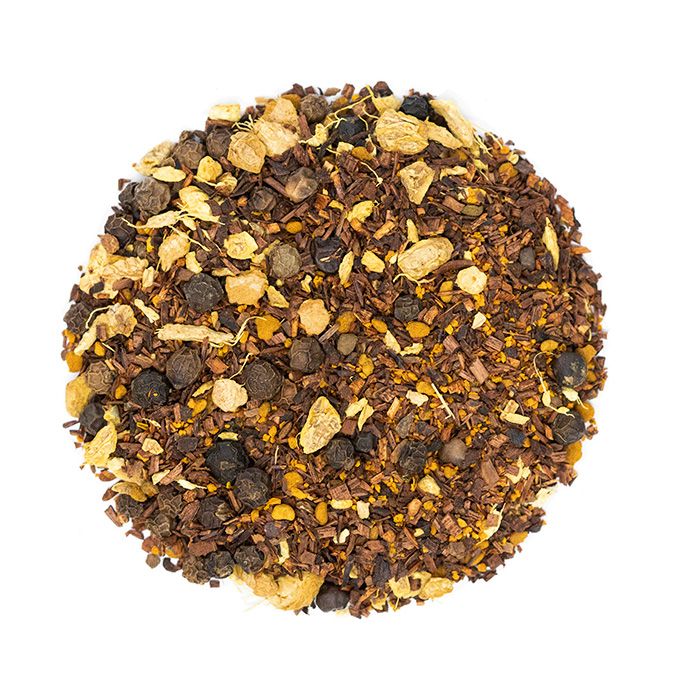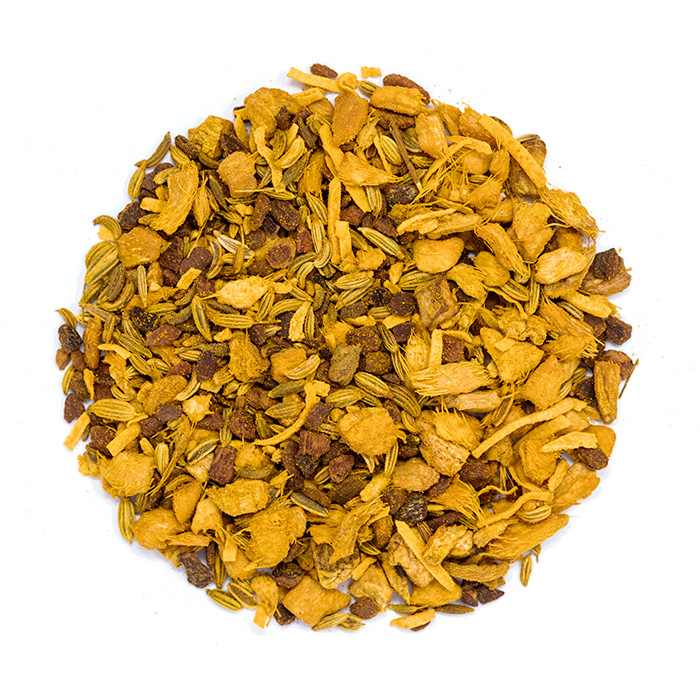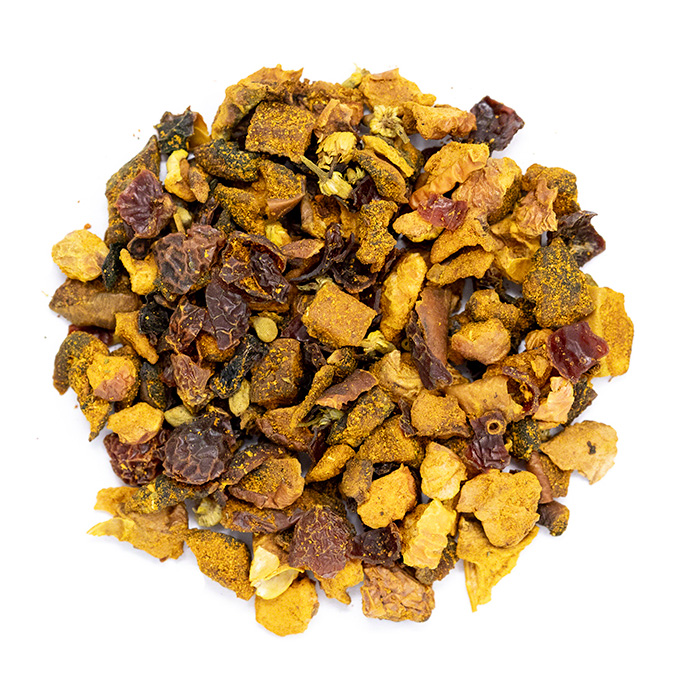How to Make Turmeric Tea at Home
Turmeric tea is a close relative of the soothing and warming ginger tea. Besides potential benefits, turmeric is delicious too, especially when prepared with milk or blended with other spices or fruits. Learn more about turmeric tea and how to make one at home.
What is turmeric?
Turmeric is a plant that belongs to the Zingiberaceae botanical family, the botanical family of ginger. It’s used as a die, medicine and spice for thousands of years. Both leaves and roots are edible, but the root is the most valuable part of the turmeric plant. Color of turmeric root is intensely orange and highly pigmented. It can be used both fresh, dried and chopped, and dried and powdered. Turmeric has a strong, pungent, warming flavor that makes it perfect for cooking and for making spiced teas. Turmeric supplements are available too.
What is turmeric tea?
Turmeric tea is tea made from pure turmeric root or turmeric blends. Because of its medicinal properties, it is gaining more and more popularity world-wide. Pure turmeric is usually made with milk, and tea blends can be brewed with water only. Both dry powder and root pieces and fresh root can be used for making tea with water, while turmeric milk tea is usually made with powder. Leaves of the turmeric plant are not used for making turmeric tea.
Turmeric tea caffeine content and side effects
Turmeric tea contains no caffeine. This makes it potentially safe for people sensitive to caffeine. However, turmeric is one of those spices that you should be more careful with than with many other teas. Side-effects may include nausea, diarrhea, headache and rash.[1] The daily allowable dose of curcumin is set between 0-3 mg per kilo of body weight[2]. Studies showed that 100 grams of pure turmeric powder has 3.14 grams of curcumin[3]. Therefore, one gram of turmeric powder could have around 31.4 mg of curcumin.
What are the benefits of turmeric tea?
-
Antioxidant activity
Turmeric contains high levels of antioxidants, out of which polyphenol curcum[4] is the most researched and important one. Curcumin may provide numerous health benefits. Turmeric contains flavonoids too, that may, together with polyphenols, reduce oxidative stress, prevent cell damage, heart disease, and cancers[5].
-
Anti inflammatory properties
Curcumin in turmeric may help with reducing different types of inflammation, including eye inflammation, arthritis, and post-operative inflammation[6].
-
Anticancer activity
Curcumin may have a great potential in anti-cancer treatments. The first evidence was found more than 30 years ago. So far curcumin showed potential against many cancers – „colorectal cancer, pancreatic cancer, breast cancer, prostate cancer, multiple myeloma, lung cancer, oral cancer, and head and neck squamous cell carcinoma[7]“
-
Benefits for the skin
Turmeric may provide numerous benefits for the skin, and it may be very beneficial for some skin conditions that are difficult to treat. For example, studies showed that it may be beneficial for treating vitiligo, a skin discoloration condition, and may show some potential in helping with psoriasis[8]. Be aware though, if you are using turmeric topically in DIY recipes, it will color your skin. Always consult your doctor before self-treating any medical condition at home.
-
Benefits for diabetics
Turmeric may be beneficial for people that are predisposed to get type 2 diabetes by delaying it, and for those already being diagnosed with diabetes[9].
-
Weight loss potential
One study showed that turmeric may help with weight loss goals too, especially in people with metabolic syndrome. Curcumin intake may help reduce the weight, waist circumference and body mass index[10].
-
Helping with the symptoms of intoxications
One of the most well-known benefits of turmeric root may be the inhibitory effect against different substances[11], including alcohol and arsenic. Turmeric powder is often used as a supplement for supporting the liver.
How to make turmeric tea
There are many ways you can make a delicious turmeric tea. You can brew it with water, milk, milk alternatives and blend with other ingredients. If you want to drink tea for health benefits, try adding some black pepper to your blend too! Research says it may increase the bioavailability of curcumin[12], and thus provide more benefits. If you are making tea with a pre-made blend, simply use hot water and steep for 5-10 minutes. Alternatively, make turmeric tea from a scratch with your own ingredients.
Hot turmeric tea recipe
To make a hot turmeric tea you will need:
- 1 inch of fresh turmeric root
- Or ½ inch of fresh turmeric root and ½ inch of fresh ginger root
- Raw honey (optional)
- A few black peppercorns
- 2-3 cups of water
Instructions:
- Wash and peel turmeric root.
- Add all ingredients into a small saucepan.
- Bring it to a boil over medium fire.
- Reduce the fire and let it simmer for at least 10-15 minutes.
- Strain, add honey and serve.
Quick Golden Milk
The name for turmeric milk tea is Golden milk. You can make this drink by blending different powders with hot milk or a milk alternative. Use about a teaspoon of dried turmeric powder per cup of milk, or 2/3 to ½ teaspoon of turmeric powder and a pinch of cinnamon powder, dried ginger powder, freshly ground black pepper or similar spices. Blend it well until dissolved and add honey if needed.
3 Best Turmeric tea blends
Turmeric Comfort Tea
This a little earthy, a little spicy, and a little sweet tea is 100% organic. Turmeric Comfort is like a herbal relative of chai tea. Earthy flavor comes from honey bush and red rooibos – two South African caffeine free teas, sweetness from bee pollen and cinnamon, whilst turmeric, black pepper and ginger add a spicy finish.

Turmeric Comfort herbal tea with honeybush and turmeric root
Coconut Spice Tea
Coconut Spice is a highly intense turmeric blend that brews into a spicy and warming cup. Sweet coconut, vanilla and cinnamon top flavors blended into a ground turmeric and ginger base. For an extra treat, brew a stronger tea and blend with coconut milk.

Coconut Spice herbal tea blend
Turmeric Nectar Tea
Turmeric nectar has a zingy and herbaceous flavor profile primarily from the turmeric and lemon myrtle. On top of the herbaceous flavor come the sweet notes of peaches, passionfruit and apples.

Turmeric Nectar herbal tea blend
Disclaimer: This article is for informational purposes only. It’s not intended to replace medical advice, diagnosis or treatment. Every person is different and may react to different herbs and teas differently. Never use teas or herbs to treat serious medical conditions on your own. Always seek professional medical advice before choosing home remedies.
References:
[1] https://www.ncbi.nlm.nih.gov/pmc/articles/PMC5664031/
[2] https://www.ncbi.nlm.nih.gov/pmc/articles/PMC5664031/
[3] https://pubmed.ncbi.nlm.nih.gov/17044766/
[4] https://www.ncbi.nlm.nih.gov/pmc/articles/PMC5664031/
[5] https://www.hindawi.com/journals/jfq/2017/8471785/
[6] https://www.ncbi.nlm.nih.gov/pmc/articles/PMC3535097/
[7] https://www.ncbi.nlm.nih.gov/pmc/articles/PMC3535097/
[8] https://www.ncbi.nlm.nih.gov/pmc/articles/PMC3535097/
[9] https://www.ncbi.nlm.nih.gov/pmc/articles/PMC3535097/
[10] https://www.ncbi.nlm.nih.gov/pmc/articles/PMC6582779/





